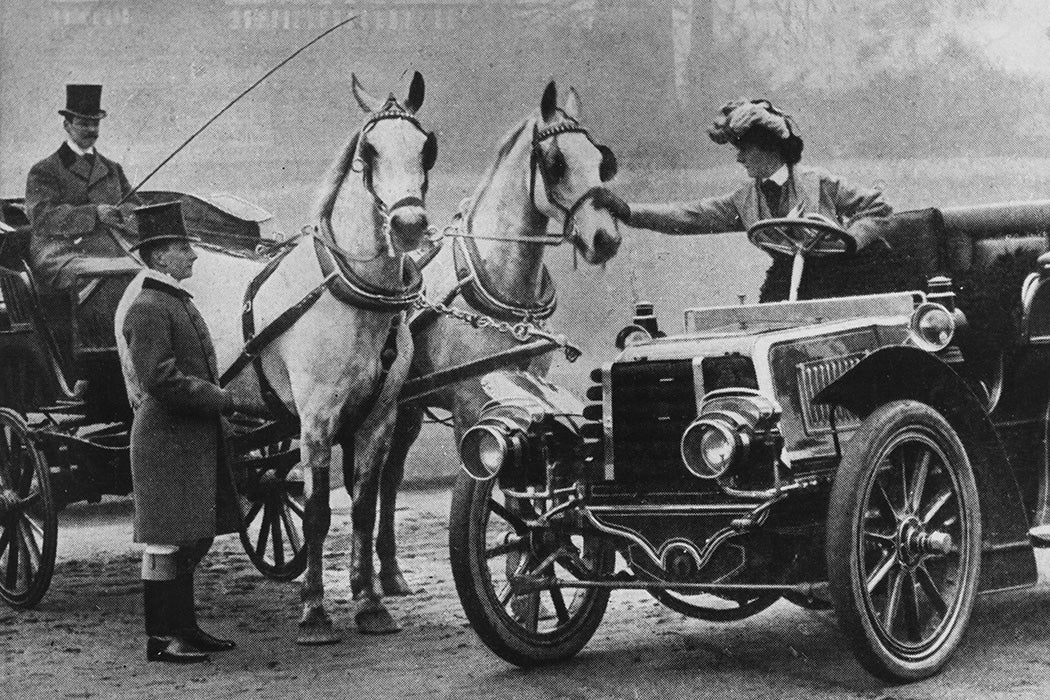If the future of transportation involves leaving gas-powered vehicles in the past, does that mean a one-to-one transition to electric gas and trucks? Greater reliance on public transit? New automated solutions for getting goods and people to their destinations? As historians Gijs P. A. Mom and David A. Kirsch write, in the early twentieth century, anyone transporting cargo faced a similar question about leaving horse-powered solutions behind.
At the turn of the century, Mom and Kirsch write, trains did a fine job transporting goods over long distances. The more difficult issue was what we today call the “last mile problem”—getting them to their final destination. “Express” companies that took packages from docks and rail stations to their destinations as well as local merchants and department stores that delivered merchandise to customers’ doors mostly used horse-drawn wagons.
But it soon became clear that motor vehicles—powered either by electricity or gasoline—had clear advantages. They were faster, didn’t require stabling, and gave companies that used them a modern image. They were also expensive. And the rhythms of local deliveries were suited to horses, which could rest while a customer tried on their new clothes or a wagon driver tapped the keg he’d delivered to a tavern. What tipped the balance in favor of motor vehicles for some was their ability to function in very hot or cold conditions—the exact times when anyone delivering ice or coal needed reliable transportation.
But, Mom and Kirsch write, there was still the question of whether to buy a gas or electric vehicle. Electric trucks were a better one-to-one replacement for horses—reliable and well suited to stop-and-go trips. But, especially as gas-powered passenger cars gained popularity, gas trucks were the superior choice for long trips. While a few cities did develop battery exchange systems, drivers of gas vehicles who needed to refuel were much better served by the network of gas stations that emerged to serve passenger cars.
Because horse-drawn wagons, gas-powered trucks, and electric trucks were suited to different tasks, many companies used a mix of all three in their fleets. By the early 1910s, it was conventional wisdom that electric and gas-powered trucks each had their own role in the transportation ecosystem of the future.
Weekly Newsletter
That began to change with World War I, when the Allied powers in Europe found that gas trucks were useful on the front lines of the war. Starting in 1914, they imported many of them from the US, upping both demand and quality standards for American manufacturers. Meanwhile, wartime strain on the railroad system increased the need for long-distance trucking, which further stacked the deck in favor of the development of better gas vehicles. The ultimate triumph of fossil fuel-powered trucks, Mom and Kirsch suggest, was not an inevitability but a product of specific contingencies.
“Technological superiority resided not simply in the physical properties of the individual technologies but in the contexts and systems in which motor vehicles were embedded,” they write.
Support JSTOR Daily! Join our new membership program on Patreon today.







